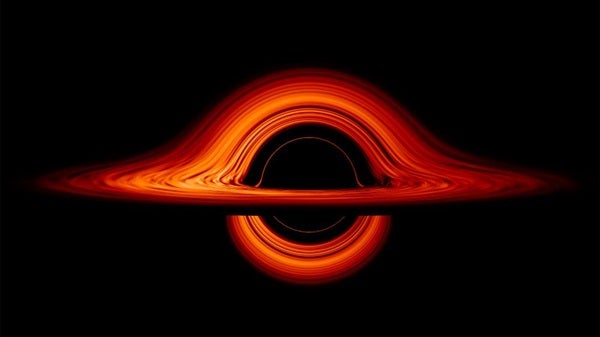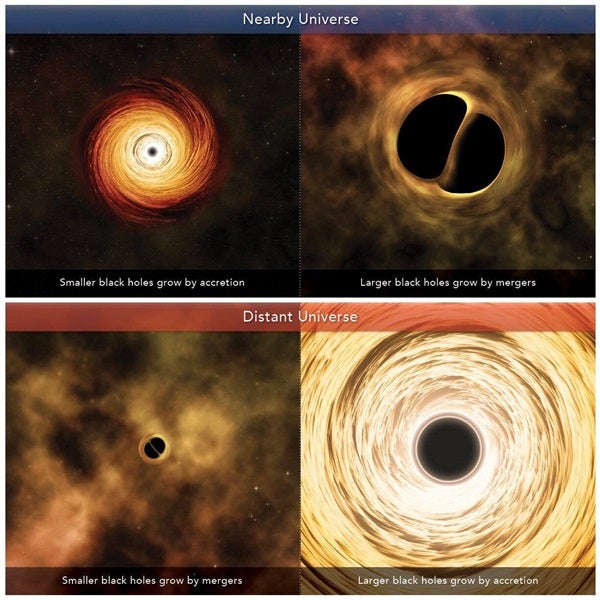The first black holes began to emerge some 13.5 billion years ago. But how did these baby beasts grow into the varied population of black holes we “see” today?
Well, thanks to a new theoretical model developed by scientists from the Black Hole Initiative and the Harvard-Smithsonian Center for Astrophysics (CfA), astronomers think they’ve got a better grasp on how different types of black holes grow — both in the infant universe and the modern cosmos.
“In the [modern, nearby] universe, small black holes are mostly adding mass via accretion. And large black holes — above 100 million times the mass of the Sun — are mostly adding mass via mergers,” astronomer Fabio Pacucci of the CfA, co-author of the study, tells Astronomy.
“And this is somehow reversed in the [early, distant] universe,” he adds. In the young cosmos, small black holes grew mostly through mergers, while massive ones relied on accretion.
This reversal may seem strange, but, according to Pacucci, it has a simple explanation: the availability of “food.”
The changing diet of small and large black holes
When a black hole grows via accretion, it’s essentially feeding on nearby gas that’s pulled in by the black hole’s intense gravity. In the early universe, there was plenty of gas available, and once the first stars formed, that remaining gas got easily jostled around. This readily available gas served as a smorgasbord for large black holes, which have wide gravitational reaches that allow them to snag lots of food.
Smaller black holes in the early universe, however, formed from the deaths of short-lived massive stars. And after a dying star collapses into a petite black hole, there isn’t a lot of leftover gas nearby that it can feed on. This means smaller black holes in the early universe couldn’t easily gorge on gas; they needed to merge with other small black holes to grow.
Today, though, there is less gas freely floating around the universe. This is because much of it has been incorporated into multiple generations of stars, the researchers say, and existing black holes have gobbled up a significant amount of the rest. In other words, today’s largest black holes have had to employ an alternative feeding strategy: cosmic cannibalism.
Although the modern universe is no longer a giant, untapped reservoir of gas, the cosmos has provided plenty of time for black holes to grow to truly epic sizes. “In every galaxy that we know of, at the center, there is a supermassive black hole that co-evolved with the galaxy,” says Pacucci.
These supermassive black holes are now thought to be so common that one is expected in the heart of nearly every large galaxy in the universe. And due to their astounding gravitational pulls, these galaxies often can’t help but barrel into one another. (Physicist Avi Loeb, one of the co-authors of this new research, recently wrote an article for Astronomy on the topic of the inevitable Milky Way-Andromeda collision.) So, because supermassive black holes are now both prevalent and attracted to their nearest neighbors, modern-day mergers between giant black holes are quite common.
“Ultimately, understanding how black holes grow over the cosmic time helps us understand the history of galaxies,” Pacucci says, “[which] are the building blocks of the universe.”
“It would be interesting to see if these relations are also valid [even earlier in the] universe,” says Pacucci, as this study only ranges from 13 billion years ago to today. “And a second goal would be to use this model to guide future observations.”
Fortunately, the next generation of space-based X-ray and gravitational-wave observatories, including Lynx, Athena, AXIS and LISA, will be instrumental in mapping the broad population of black holes and how they grew across cosmic time.











